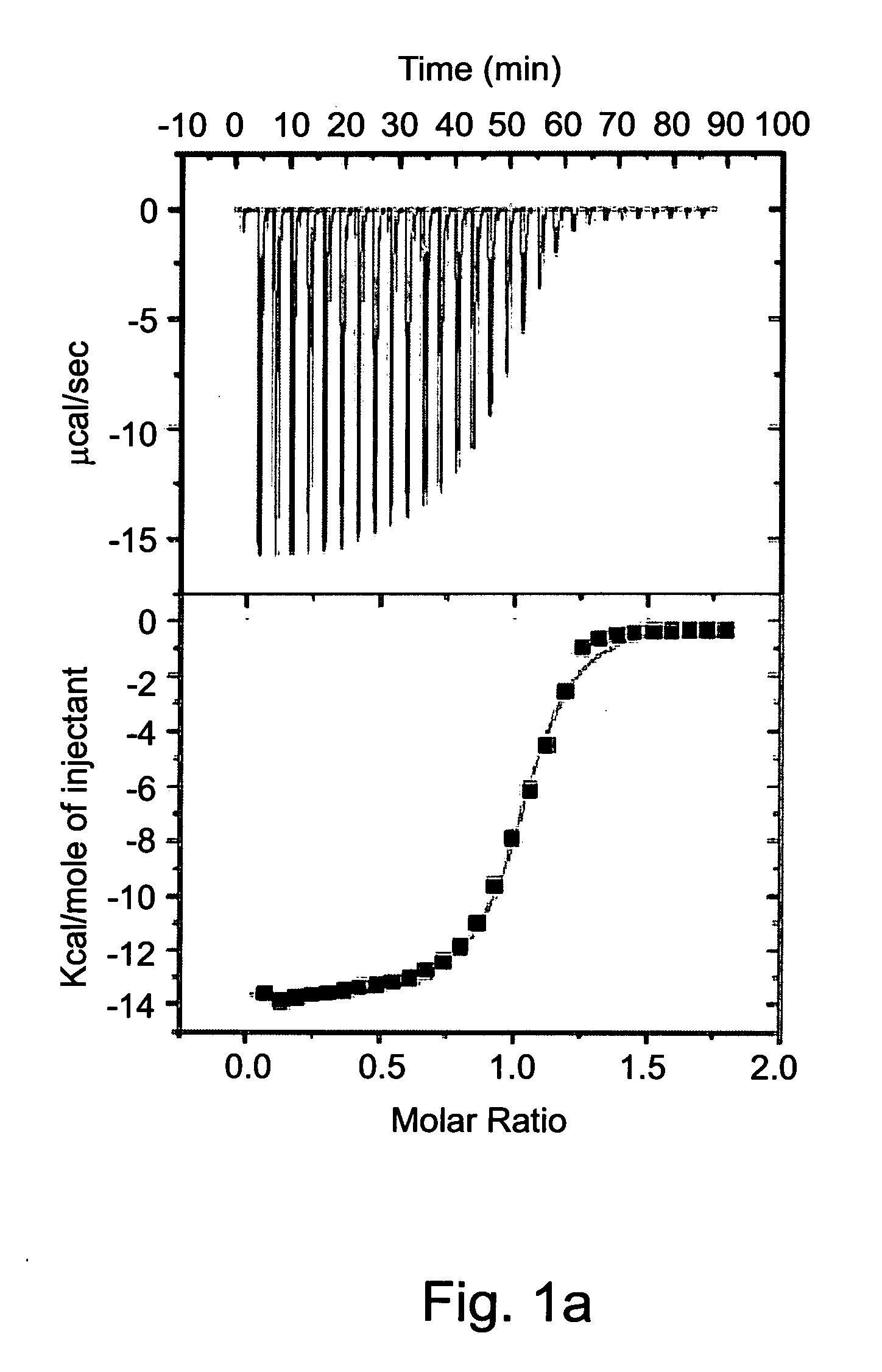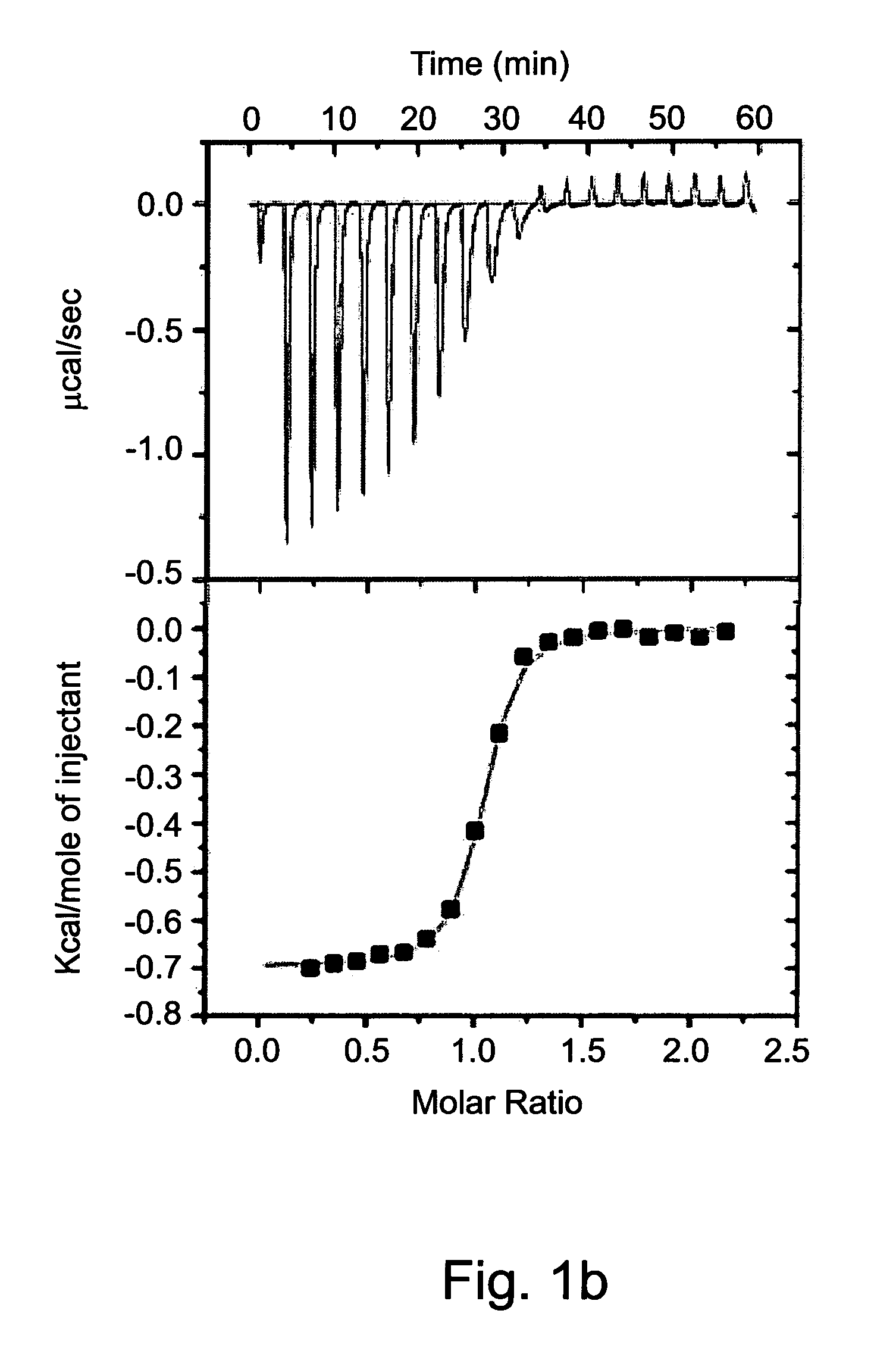Frictionless molecular rotary motors
a rotary motor and frictionless technology, applied in the field of rotaxanes, can solve the problems of failure to overcome the limitation of the unidirectional motion of the molecular rotary motor, lack of repeatability,
- Summary
- Abstract
- Description
- Claims
- Application Information
AI Technical Summary
Benefits of technology
Problems solved by technology
Method used
Image
Examples
example 1
Molecular Mechanics Calculations
[0258]An exemplary stator-rotator molecular rotary motor system according to some embodiments of the present invention, having rotaxane architecture, consisting of a rigid and linear hexadiyne moiety capped with a trioxoadamantyl stopper moiety on each end serving as a rotator, and a CB[6] (Compound 1) serving as a stator, is illustrated in Scheme 2 below.
[0259]This molecular motor system is characterized by repulsive interactions between the diyne rod and the interior of the CB[6], owing to the high electron density of both diyne and the interior of the CB[6]. It was expected that the 48 non-bonding electrons of the carbonyl oxygens of the CB[6] and the filled π-orbitals of the 12 urea groups thereof would repel the π-electrons of the diyne rod. Consequently, it was predicted that when the polyyne rod is inserted into the cavity of the CB[6], the repulsive interaction should keep it floating at the center of the cavity in perfect alignment with the 6...
example 2
Chemical Syntheses
[0264]Materials and Methods:
[0265]All starting materials were purchased from known commercial sources unless stated otherwise. THF was dried and distilled over sodium / benzophenone and DMF was dried and distilled over CaH2.
[0266]1H NMR, C13 NMR spectra were recorded on a Bruker Ultrashield AV300 spectrometer, operating at 300 MHz (1H) or 75.44 MHz (13C), using CDCl3 as a solvent unless specified otherwise. Chemical shifts reported (in ppm) are relative to internal Me4Si (δ=0.0).
[0267]CI-MS spectra were measured on a Finnigan TSQ-70 spectrometer and MALDI-TOF spectra were measured on a MALDI Micromass spectrometer using α-cyano-4-hydroxycinnamic acid as a matrix.
[0268]TLC was performed on glass sheets pre-coated with silica gel (Merck, Kieselgel 60, F254, Art. 5715).
[0269]Column chromatographic separations were performed on silica gel (Merck, Kieselgel 60, 230-400 mesh, Art. 9385) under pressure (flash chromatography).
[0270]Synthesis:
[0271]General Procedures Used in ...
example 3
Isothermal Titration Calorimetry
[0590]Isothermal titration calorimetry (ITC) was previously employed to study complexation parameters of Compound 1 [63]. Measurement of the host-guest binding thermodynamic profile using ITC provides in a single experiment not only the binding constants (Kb) and binding stoichiometry (n), but also the differences of enthalpy (ΔH) and entropy (ΔS) of binding.
[0591]The experiment was carried out by loading the ITC sample cell with saturated aqueous solution of Compound 1 (1.4 ml) and titrating it with a neutral aqueous solution of the dicationic dihydrochloride salts of various exemplary guest molecules at concentrations that ranged from 3.3 mM to 5.0 mM. The heat generated during each injection was recorded (FIG. 1) and the thermodynamic parameters were acquired by non-linear least squares fit of the calorimetric titration data to a one-site binding model (Table 2).
[0592]A saturated solution of Compound 1 (0.4 mM) in water at pH=7 was prepared by stir...
PUM
 Login to View More
Login to View More Abstract
Description
Claims
Application Information
 Login to View More
Login to View More - R&D
- Intellectual Property
- Life Sciences
- Materials
- Tech Scout
- Unparalleled Data Quality
- Higher Quality Content
- 60% Fewer Hallucinations
Browse by: Latest US Patents, China's latest patents, Technical Efficacy Thesaurus, Application Domain, Technology Topic, Popular Technical Reports.
© 2025 PatSnap. All rights reserved.Legal|Privacy policy|Modern Slavery Act Transparency Statement|Sitemap|About US| Contact US: help@patsnap.com



